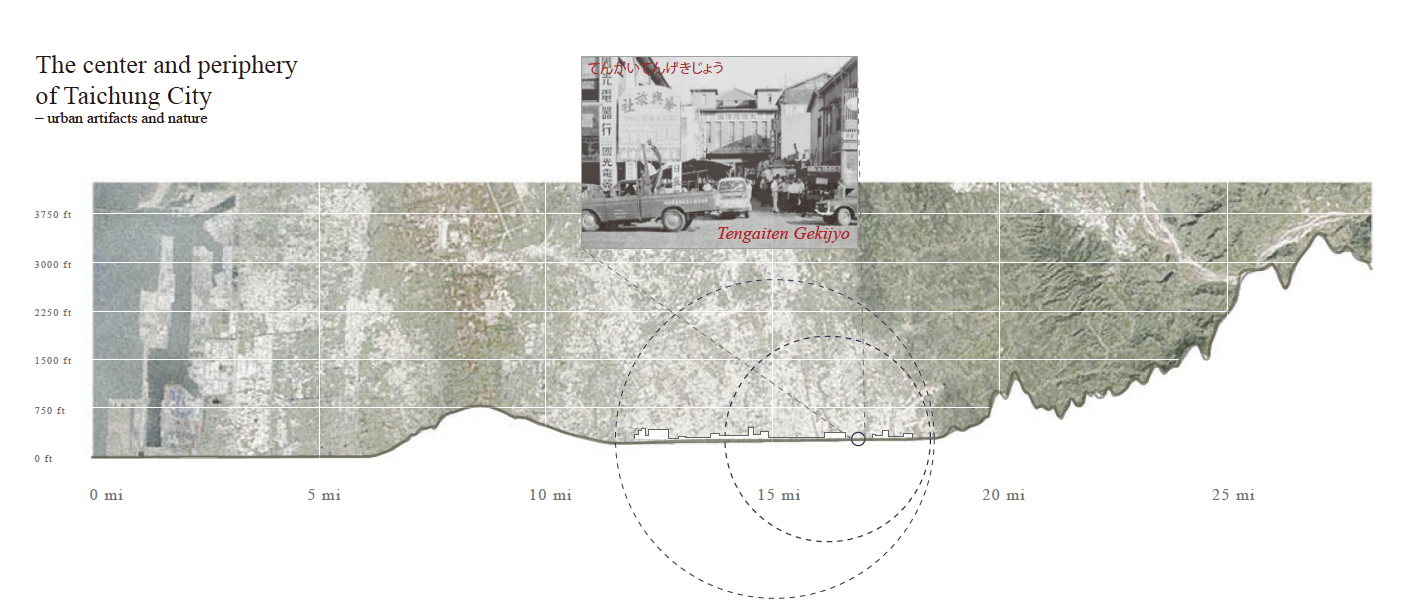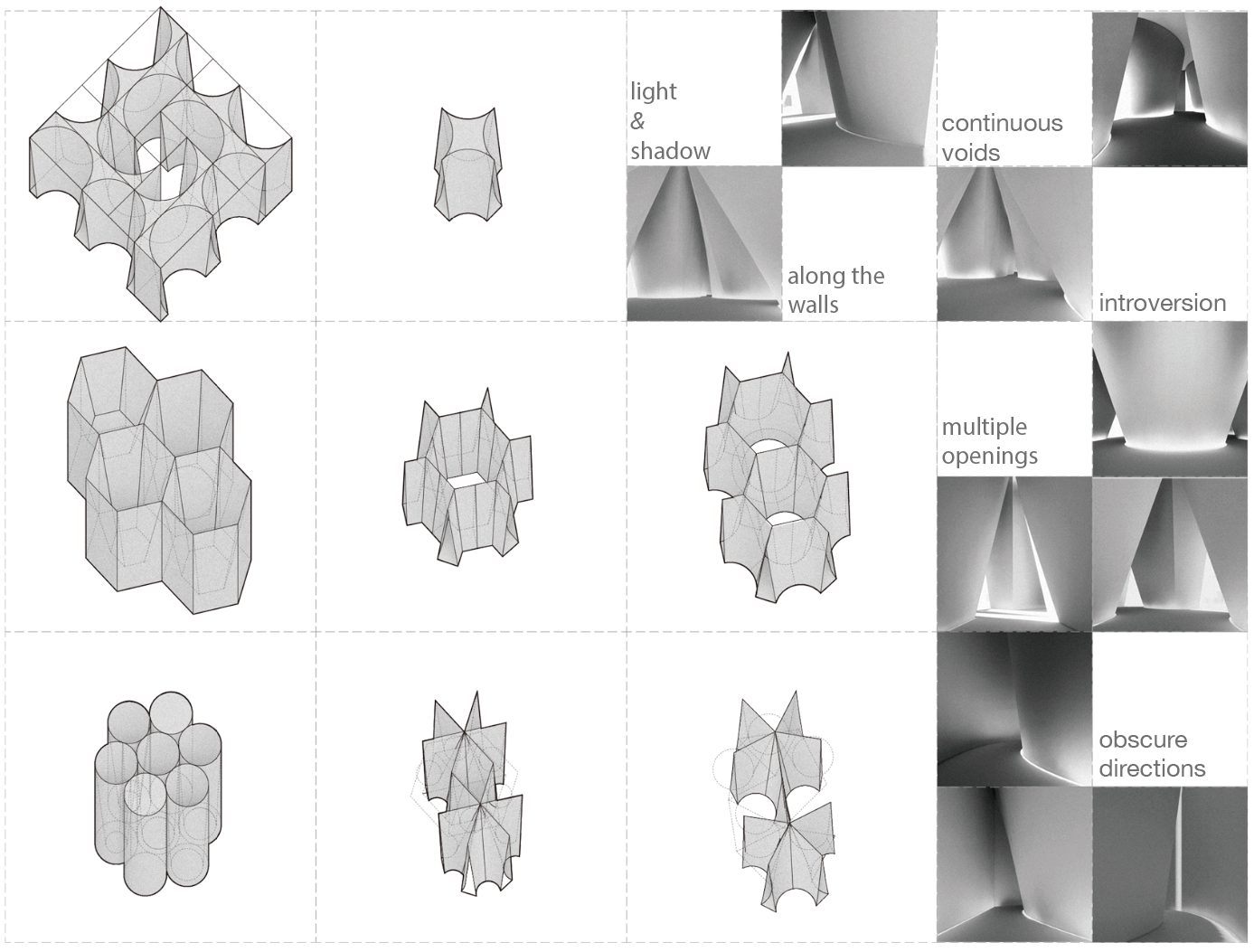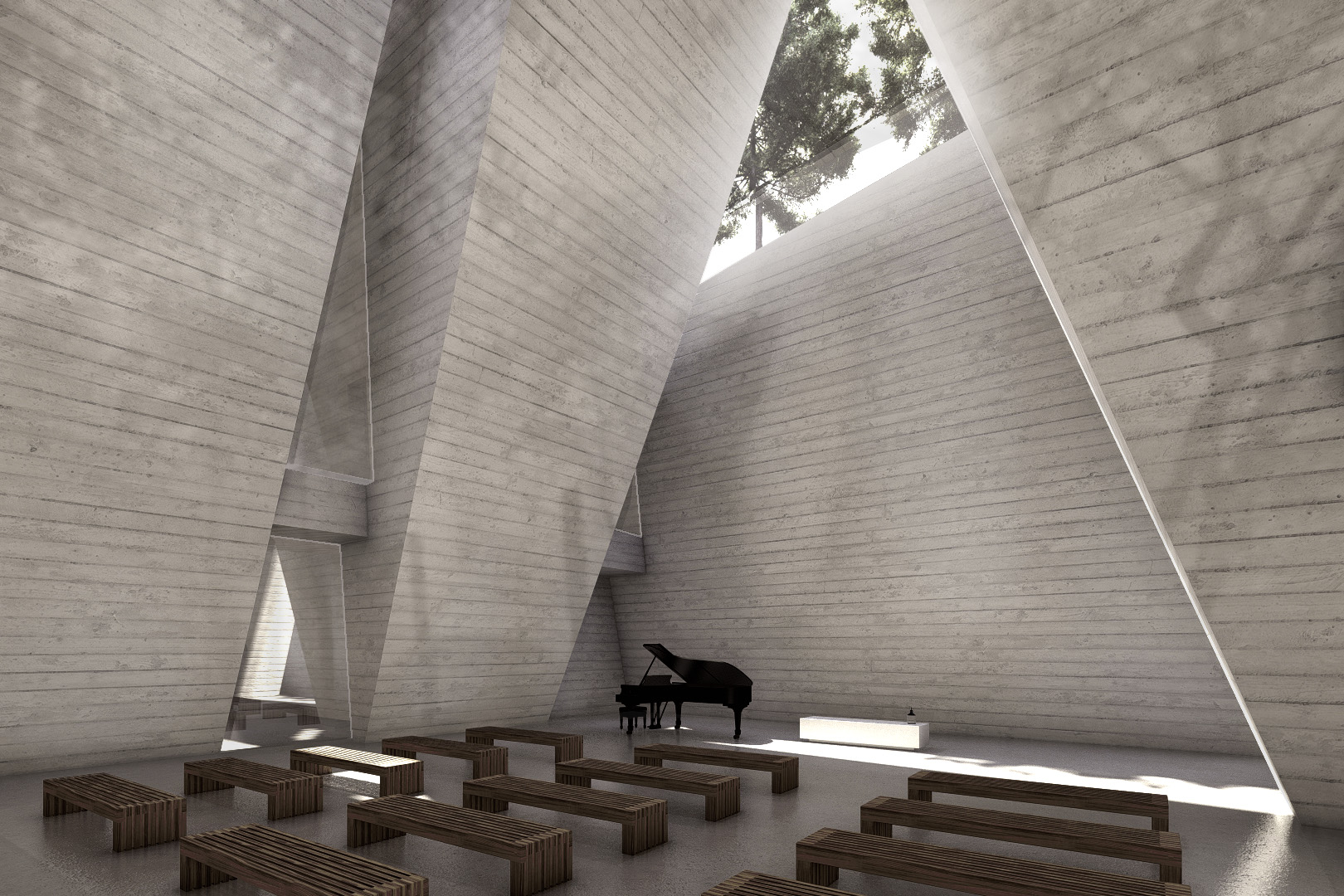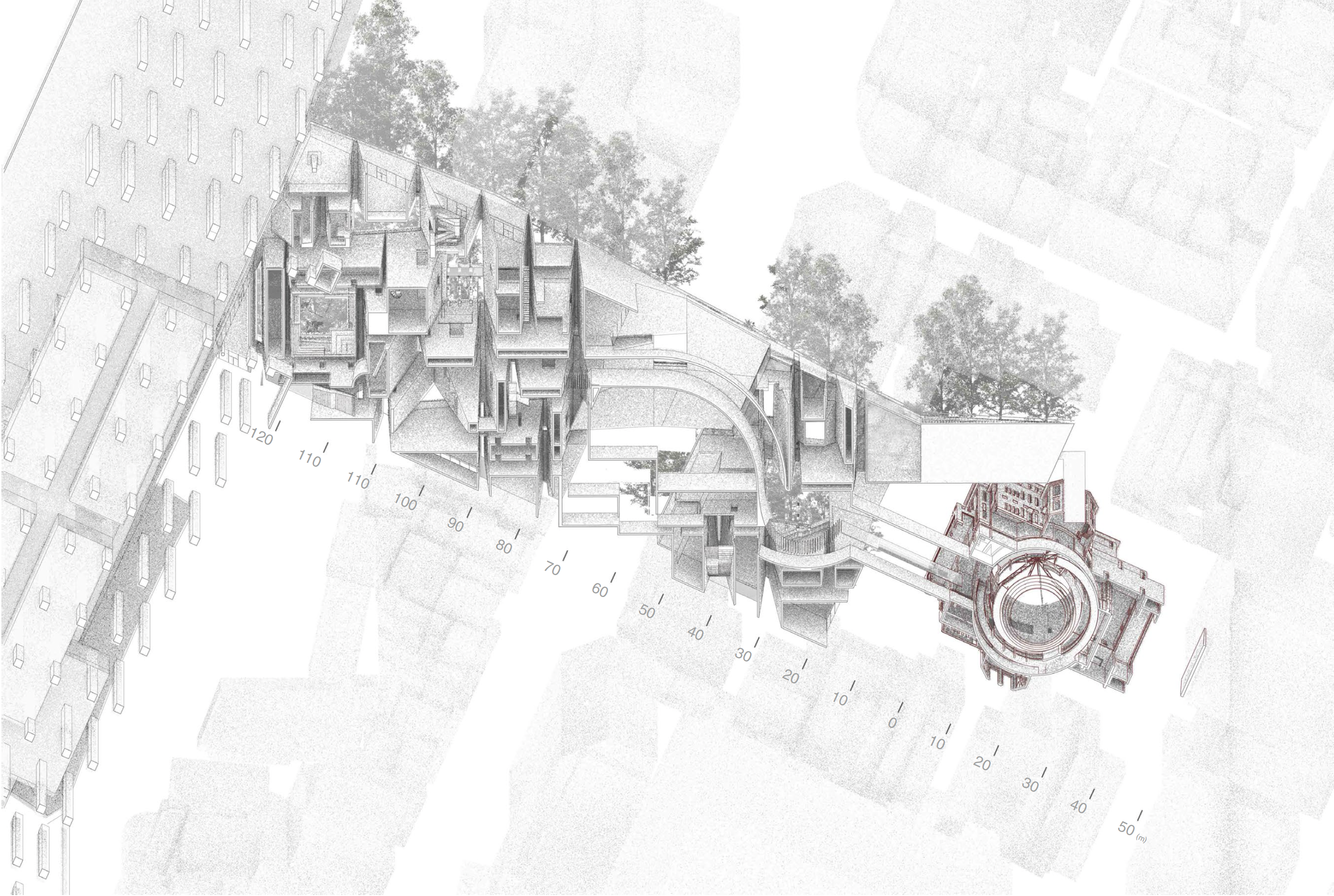DAS.06/
FOREST OF THE ABSENCES
/ 1805
A landscaped cemetery with an abandoned theatre
“The Usefulness of Useless” is a critical concept raised by the philosopher Zhuangzi. The concept deals with the importance of the absences and critical perspectives of the presences. The thesis design is based on the concept and questioning about negative spaces in urban districts. The site is located in Taichung railway station's rear area, and an old theatre (Tengaiten Gekijyo) is hidden within the block.
Faced with the decaying old central area and theatre ruins, the design aims to connect the past while engaging the present. This project proposes a landscaped cemetery (ecological burial) and social welfare facilities alongside the historic theatre. The open landscape brings back people’s memories about the place and gives it the ability to resist replacement by others. By merging two negative spaces to create a new type of urban space, the once useless spaces become useful for the citizens.
The specialized spatial condition of theatres was the maximum use of program-oriented architecture. However, the spatial condition of theatres is so unique that when the area decays, it cannot transform into other programs and become ruins (negative spaces). Ironically, theatres are often the most critical places of people’s collective memories.


“The amphitheater had a precise and unequivocal form as well as function. It was not thought of as an indifferentcontainer, but rather was highly precise in its structure, its architecture, and its form. But a succession of external events at a dramatic moment in history reversed its function, and a theater became a city. This theater-city functioned like a fortress and was adapted to enclose and defend its inhabitants.”
Urban Expansion & Negative Spaces
The center and periphery of Taichung City


Cemeteries & Theaters
Over the past 100 years, Taichung city has expanded. The city's expansion can be seen from the notation of cemeteries and theaters. Theaters represent the city center, and cemeteries mark the outside border.


Unit prototype
Occupation of Nature
Having nature to occupy the blank space and creating in-between spaces becomes a new type of memorial space. Imagining the void between the trees becomes a space for people to walk through and remember their loved ones. In this case, the unit prototype may have a chance to fit in urban spaces and become a memorial landscape for citizens.
Formation of the unit
I. Lebensraum of trees.
II. Elevating the occupated space and creating underneath spaces.
III. Top-down occupation of nature. The occupation of nature creates in-between spaces for others.
IV. Architecturalization of the nature's occupation.
V. The void in-between is the leftover spaces of nature.
VI. Oblique slabs construct the unit. The slabs not only create voids but also spaces for nature to survive.






Ruins are traces of the past. When a place decays, nature reclaims its space. The occupation of nature makes the space go beyond function and time, sublimating the place's memory. The landscape of ecological burial has occupied the absence of urban space, creating a new path toward the old abandoned theater.
















THU Arch
Thesis Design
Advisor: Yu-Han Michael Lin
Thesis Design
Advisor: Yu-Han Michael Lin
